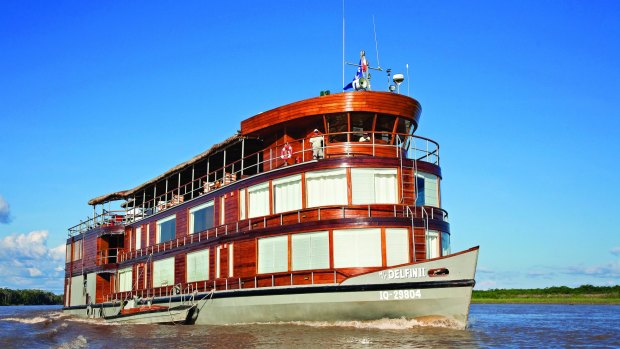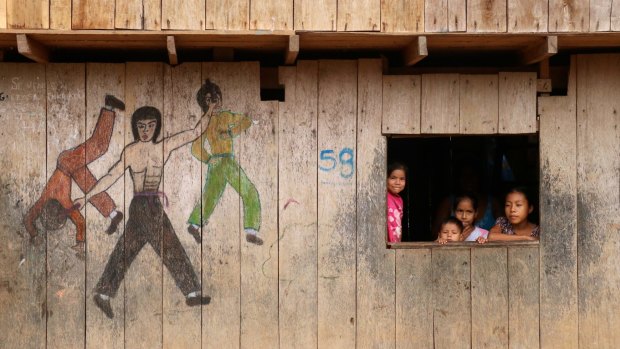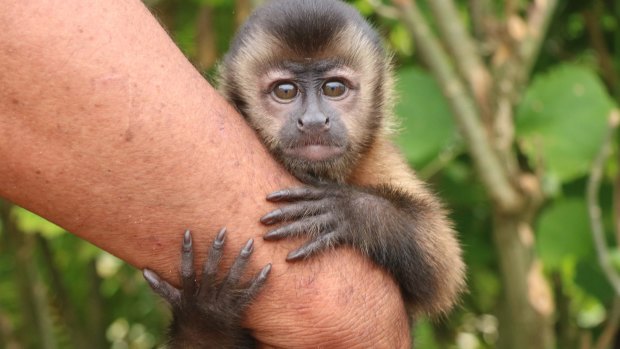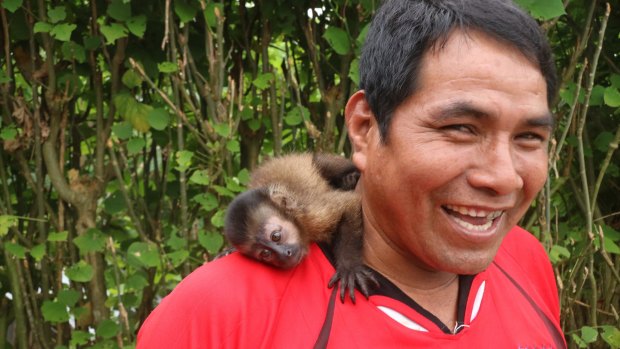This was published 7 years ago
San Francisco on the Amazon River, Peru: The other San Franciso

Delfin II.
The Amazon's animal and plant life is legendary, but who knew the famous river and its catchment also has more than 20 million human inhabitants? There are Amazonian cities with more than a million souls, such as Belem and Manaus in Brazil; even Iquitos in Peru, where my 10-day Upper Amazon river cruise had started, has a population of half a million. More common however are riverside villages, some with rather familiar names.
"I grew up in Texas, met my wife in Indiana and had my honeymoon in Buenos Aires – without ever leaving Peru," says one of our Peruvian naturalists, Adonay Rodriguez, introducing himself with a grin on our first day afloat.
So it is that we visit San Francisco, population 450, on the morning of day three. Its residents are "riberenos", river people whose world is the rainforest and the river Maranon, which merges with the Ucayali just downstream to form the world's largest river.

Children at a cut-out window next to kung fu drawings.Credit: Louise Southerden
It's a neat village and peaceful: no road access means no vehicles, school's out for the summer (the school year runs from March to December) and the communal generator provides electricity only at night, between 7pm and 10pm.
Few outsiders come here, so the people seem shy – but curious. As we walk along the main "street", a concrete footpath connecting the Catholic church at one end of town with the water tower at the other, faces appear at the cut-out windows of the wooden-plank houses on either side.
Three barefoot children, one with a slingshot around his neck like a stethoscope, venture out to say "hola" and show us their pets: wild animals orphaned by poachers. There's a baby black caiman (alligator) on a string, and a yellow-headed side-necked turtle looking displaced on dry land; a man walks over with a recently rescued 3-month-old monkey riding on his shoulders, a capuchin (sometimes called "organ-grinder" monkeys for their sad history in the entertainment business).

Young capuchin monkey orphaned by poachers and now a pet.Credit: Louise Southerden
Later, I see a girl sitting in front of a house cradling a young three-toed sloth like a large rag doll. When I wander over to pat it, I'm struck by two things: its fur is surprisingly soft and it would be hard to imagine a gentler creature for a child to befriend.
Animals infuse other aspects of life in this village, as we see during a cultural performance in San Francisco's barn-like hall. Accompanied by the Leaf Cutter Ants (four men in grass skirts playing drums, maracas and a PVC flute), the Jungle Butterflies (three girls in grass skirts and tops) invite us to join them in doing the "Tangarana", a slow jig named after a biting ant.
It's heartening to see traditions kept alive, and just as uplifting to see positive changes coming to San Francisco. Sitting on benches in an open thatched hut, fanning ourselves in the liquid heat, we learn about projects a local non-profit, Minga Peru, has been helping people set up, such as fish farms and forest regeneration sites.

Man and monkey – the orphaned capuchin monkey rescued from the rainforest, now a pet.Credit: Louise Southerden
There's also a community radio station, Bienvenida Salud (Welcome Health), which reaches 120,000 riberenos in the area every day, educating them about formerly taboo topics such as domestic violence, HIV/AIDS – and gender equity.
"Before, too much machismo," says one man, referring to the social changes Minga Peru has brought. Other men nod, adding that they now have more respect for their wives. "Thanks to Minga Peru, I have an opportunity to also be a leader in the community," says a woman who attends workshops in Iquitos and nearby Nauta, and shares her new knowledge with her fellow San Franciscans. "Now I know what self-esteem means."
Our visit ends with an exit-through-the-gift-shop experience, Amazon-style. It's a chance to support the community by buying souvenirs inspired by its surroundings and hand made from local materials: wooden fish with real piranha teeth, sloth Christmas decorations made of string and colourful crocheted straw bags, dolls and animals – butterflies, toucans, iguanas and tarantulas.
A plain balsa-wood jaguar catches my eye. I hand over 20 soles (about $8) for it and ask the elderly woman who carved it if she has seen many "tigre", as they're called in Spanish. "Dos," she says. Just two jaguars in an entire lifetime? It's a reminder that the Amazon is still a wild and formidable place, even for those who live on its doorstep.
TRIP NOTES
MORE INFORMATION
GETTING THERE
Qantas flies from Sydney and Melbourne to Lima via Auckland and Santiago, code-sharing with LAN. See qantas.com.
STAYING THERE
There's no tourist accommodation in San Francisco. Louise Southerden's visit was part of a 10-day Lindblad Expeditions "Upper Amazon Aboard the Delfin II" trip, which has departures year-round ex Lima. The Delfin II can accommodate 28 guests, with cabins starting at $8360 a person. See au.expeditions.com.
Louise Southerden travelled as a guest of Lindblad Expeditions.
Sign up for the Traveller Deals newsletter
Get exclusive travel deals delivered straight to your inbox. Sign up now.